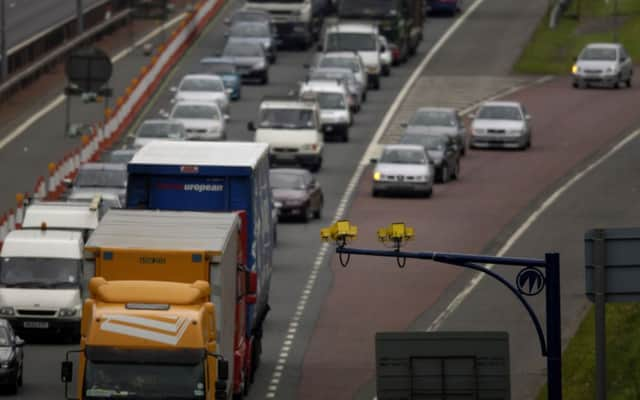Up to speed with the challenges of change


The average speed cameras on the A9 have been much in the news, but the big story for the road freight industry has been the increase in the speed limit for lorries to run at 50mph on the single carriageway sections of the route. Increasing the speed limit for some lorries has required checks and balances to ensure road safety. The speed cameras have been one of the checks to ensure higher lorry speeds can be delivered safely.
Instead of car drivers spending long periods caught behind lorries travelling at the previous legal limit of 40mph, the new speed limit means all traffic can benefit from reduced journey times by travelling at 50mph more of the time. This will help most when the road is busy and there are limited overtaking opportunities.
Advertisement
Hide AdAdvertisement
Hide AdAchieving a common speed of 50mph has been part of the recipe for the efficiency of Norway’s long-distance single carriageways for many years. In remote areas, single carriageways need to function like motorways and be safe for people spending many hours on long journeys. Scotland has been caught between UK road design standards and speed limits and the needs of large, remote areas. The new powers of the Scottish Government over speed limits change that, letting it better manage efficient, safer, single carriageways.
However, social expectations take time to change. Many people and businesses have grown to expect that they can achieve much faster journey times on the A9. In the 1980s, journey times to Inverness were a social talking point. The current A9 construction was nearing completion and at the first mention of someone having recently travelled from the Central Belt to Inverness, people would ask, “how long did it take you?” The responses implied average journey speeds well in excess of the speed limit. Through millions of conversations in the 1980s, Scots recalibrated not just perceptions of the geography of Scotland but of the acceptability of speed limit compliance.
Today, the conversations are about what people think of speed cameras. Is this nanny state, Big Brother, or an example of a new, better society with strong leadership from government? At CILT we have worked with our partners in the haulage industry to help them overcome the negative press they were getting about delaying cars on the A9 (and helping them make better use of rail freight opportunities). The joint working that delivered the 50mph speed limit seems like a good deal for everyone. Reduced journey times for most motorists and fewer accidents are promising signs of a successful scheme.
The A9 partnership looks like a successful example of working together for mutual benefit. The debate about average speed cameras for the A9 has shown that when government, police, local authorities and road users work together they can come up with better solutions.
But what about the people who have grown to expect that they can achieve much faster journey times? They now find that their clients, customers or holiday home are all now a bit further away than they thought. Waiting 20 years for a completed dual carriageway to get speeds back up to 70mph can seem frustrating. In reality, the only journeys that were much faster than the speed limit were at quiet times of day. Many of the worst fatal accidents have also been at those times of day, so there is no safety argument for higher speed limits for cars. If someone falls asleep at the wheel in the opposite direction you have a better chance of survival at lower speeds.
Perhaps the most important thing to learn about the A9 is that massive social changes require social change to be managed alongside engineering change. The social acceptability of speeding should have been managed at the time. If we apply similar thinking to the new things happening today, then it will be the social issues related to driverless cars and other new technologies that would benefit from the transport partnerships.
What a pity, then, that Scotland will be reliant on the English driverless car trials. Just as long-distance single carriageways in Scotland were associated with different social and safety issues, so the forthcoming changes will need to be considered carefully.
CILT, through its Transport 2035 series of reports, is prompting all in the industry to manage future social and economic changes within transport technology development. The people of Scotland are not yet engaged with that debate.
• Derek Halden is chair of the Scottish branch of the Chartered Institute of Logistics and Transport, www.dhc1.co.uk